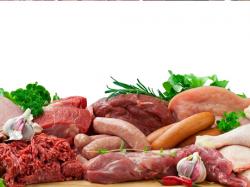Consumer Preference For Home Cooked Meals Ignites Meat, Poultry Sales
April 5, 2011 | 3 min to read

NEW YORK, NY — In spite of a difficult retail market in which consumers are more price sensitive than before, suppliers of center-plate protein (including poultry, beef, pork and seafood) at the retail level have been benefiting from Americans seeking to economize by cooking and eating at home. The eating-at-home trend has been further fueled by the perception that homemade meals are healthier than restaurant cuisine.
As a result, dollar sales of dinner center-plate proteins gradually rose during the five-year period from 2006 to 2010, according to market research publisher Packaged Facts in What's For Dinner 2011: Trends in Center of Plate. Packaged Facts estimates sales of dinner center-plate proteins exceeded $5 billion in 2010. Sales were also strongest in 2010, when they rose 4%, a notch higher than the 3% compound annual growth rate (CAGR) registered during the period. Modest but steady growth is forecast through 2015 even as consumers begin their gradual return to dining out more frequently.
"We expect sales growth to continue at 4% annually for the next three years, benefiting from the strengthening economy but facing increased restaurant competition as that channel also reaps the rewards of U.S. consumers loosening their purse strings," says Don Montuori, publisher of Packaged Facts. "By 2014, sales will begin to moderate, with 3.5% annual growth in 2014 and 2015 bringing U.S. retail sales to slightly more than $6 billion."
Topping each of the meat, poultry and seafood categories are private label products labeled with the store name and sold at supermarket butcher counters and fish counters or prewrapped in the meat case. Grocers have been using private-label protein products to draw in customers and create differentiation in a crowded retail marketplace. The fact that consumers have flocked to private-label offerings more than they have to those marketed as "upscale" further signifies that this remains a tentative economy in which consumers are looking for value and are not as easily wooed by fanciness, notes Montuori.
Private-label sales of center-plate meat garnered a 43% market share, more than triple the 12% category share maintained by Cargill, the leading national brand. With $571 million in 2010 sales, private-label fresh and frozen chicken controlled 28% of the center-plate poultry market, more than double the level of sales enjoyed by the category's top marketer, Jennie-O. Consumers also prefer private-label seafood to national brands, to the tune of $60 million in 2010, up 17% over the previous year's sales.
What's For Dinner 2011: Trends in Center of Plate Proteins examines the proteins that U.S. consumers place "center of plate" for the dinner daypart, including meats (beef, pork, lamb, etc.), poultry (chicken and turkey), and seafood (fish and shellfish). It focuses on fresh (refrigerated) protein products cooked at home, which encompass raw products in general as well as value-added products for sale at meat and seafood counters (e.g., pre-marinated meats, pre-skewered kabobs, etc.). The report examines the forces driving consumer choices, including economic factors, the healthfulness of various products, personal tastes and preferences, culinary trends, convenience, cooking skills, and environmental factors. Consumer shopping habits are also examined, as are trends among those involved in this industry, including suppliers of the center-plate protein products and the retailers in which consumers buy them. For further information, please visit: http://www.packagedfacts.com/Dinner-Trends-Center-2806009/.
About Packaged Facts — Packaged Facts, a division of MarketResearch.com, publishes market intelligence on a wide range of consumer market topics, including consumer goods and retailing, foods and beverages, demographics, pet products and services, and financial products. Packaged Facts also offers a full range of custom research services. To learn more, visit: www.packagedfacts.com. Follow us on Facebook, LinkedIn and Twitter.
Source: Packaged Facts
